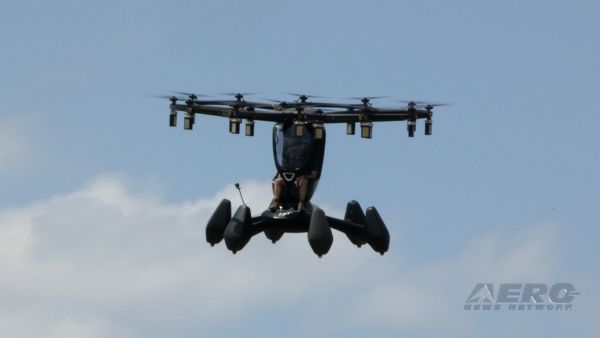Mon, Jul 24, 2006
Aero-Tips!
A good pilot is always learning -- how many times have you
heard this old standard throughout your flying career? There is no
truer statement in all of flying (well, with the possible exception
of "there are no old, bold pilots.")

Aero-News has called upon the expertise of Thomas P. Turner,
master CFI and all-around-good-guy, to bring our readers -- and us
-- daily tips to improve our skills as aviators. Some of them, you
may have heard before... but for each of us, there will also be
something we might never have considered before, or something that
didn't "stick" the way it should have the first time we memorized
it for the practical test.
Look for our daily Aero-Tips segments, coming each day to
you through the Aero-News Network.
Aero-Tips 07.24.06
One very helpful workload-reduction tool I employ in flight is
what I call the Altitude Critical Area, or
ACA. The idea for the ACA comes from the airline industry and most
notably author Robert Sumwalt, who coined the term to describe the
final portion of an instrument approach. I've adopted the term but
expanded on the concept greatly in teaching single-pilot resource
management (SPRM).
An Altitude Critical Area is any range of altitude --
- within 1000 feet of the ground, and/or
- within 1000 feet of a level-off altitude (whether on climb or
descent) until established and trimmed on that altitude.
The idea is to reduce workload by limiting nonessential tasks
when in an ACA. Don't be calling ahead to the FBO for a fuel load
or a rental car when flying in an ACA. Avoid pulling out charts or
briefing yourself for an approach or programming the GPS when in an
ACA. In almost all cases these sorts of tasks can wait until you're
established and trimmed on level flight, or you land or fly out of
an ACA. Evoke a "sterile cockpit" when inside
an ACA, after first briefing your passengers on what a sterile
cockpit means, and how and when you'll declare sterile cockpit
rules to be effective on board your aircraft.
Pilot workload is high enough on takeoff, on approach and
landing, and during intermediate and final level-offs without
adding the distractions of passenger conversation and extraneous,
non-time-sensitive tasks.
Aero-tip of the day: VFR or IFR, observe
Altitude Critical Areas to reduce workload and increase safety.
More News
Also: B-29 Superfortress Reunion, FAA Wants Controllers, Spirit Airlines Pulls Back, Gogo Galileo Van's Aircraft posted a short video recapping the goings-on around their reorganiz>[...]
Light Gun A handheld directional light signaling device which emits a brilliant narrow beam of white, green, or red light as selected by the tower controller. The color and type of>[...]
"The journey to this achievement started nearly a decade ago when a freshly commissioned Gentry, driven by a fascination with new technologies and a desire to contribute significan>[...]
"Our driven and innovative team of military and civilian Airmen delivers combat power daily, ensuring our nation is ready today and tomorrow." Source: General Duke Richardson, AFMC>[...]
Aircraft Conflict Predicted conflict, within EDST of two aircraft, or between aircraft and airspace. A Red alert is used for conflicts when the predicted minimum separation is 5 na>[...]
 Airborne 04.16.24: RV Update, Affordable Flying Expo, Diamond Lil
Airborne 04.16.24: RV Update, Affordable Flying Expo, Diamond Lil ANN's Daily Aero-Term (04.20.24): Light Gun
ANN's Daily Aero-Term (04.20.24): Light Gun Aero-News: Quote of the Day (04.20.24)
Aero-News: Quote of the Day (04.20.24) Aero-News: Quote of the Day (04.21.24)
Aero-News: Quote of the Day (04.21.24) ANN's Daily Aero-Term (04.21.24): Aircraft Conflict
ANN's Daily Aero-Term (04.21.24): Aircraft Conflict



